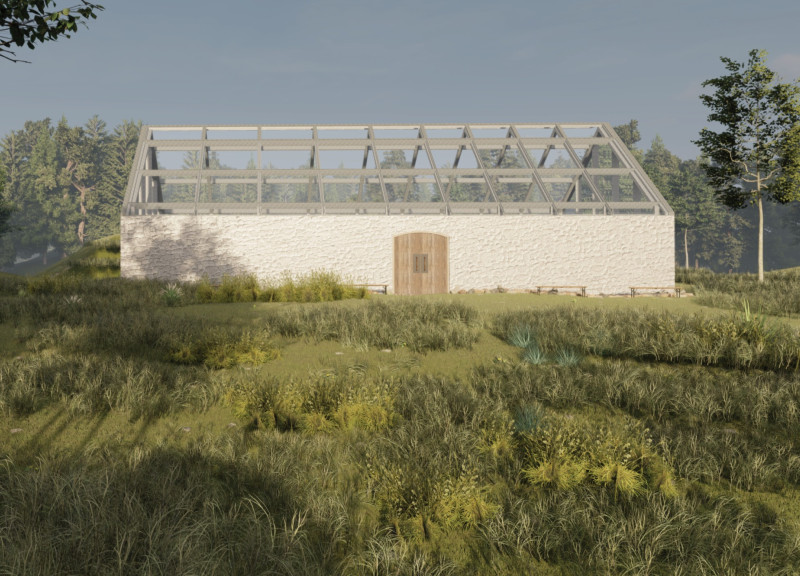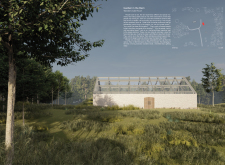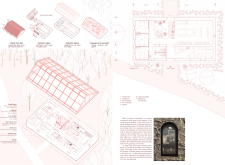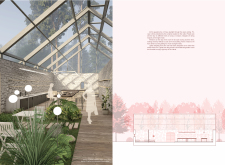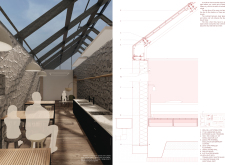5 key facts about this project
The Garden in the Barn project is a guest house located near a forest and lake, focusing on enhancing the tea-making experience for those who visit. The design concept emphasizes the connection between indoor spaces and the natural environment, creating an inviting setting that encourages guests to enjoy their surroundings. The goal is to immerse visitors in a peaceful atmosphere where they can engage with both the art of tea-making and the beauty of nature.
Inner Garden
The inner garden serves as a key feature of the design, bridging the gap between the interior and the outdoors. It acts as a focal point that invites guests to relax and connect with the nature surrounding them. This garden allows for observation of tea cultivation and preparation, playing a significant role in creating an immersive experience. Here, the integration of greenery promotes tranquility and encourages a deeper appreciation for the natural world.
Guest Accommodations
Guest rooms are designed with skylights that bring in natural light and offer views of the sky, enhancing the overall ambiance. This arrangement provides a balance between privacy and the desire for outdoor connection, allowing visitors to feel both comfortable and engaged with their environment. The design ensures that guests can benefit from the changing light throughout the day, contributing to a soothing indoor atmosphere.
Community Spaces
The kitchen is intended as a communal area that supports social interaction among guests. It is flexible in its arrangement, accommodating both small and large gatherings. This design choice fosters a sense of community and encourages conversation, making the guest house feel welcoming and warm. Its proximity to the inner garden helps reinforce the connection between shared experiences and the natural setting.
Materiality
Stone walls are used in the design to enhance both the look and structure of the guest house. These walls create a link to the surrounding landscape while providing a clear boundary between indoor and outdoor spaces. This approach adds to the aesthetic quality of the guest house, emphasizing the relationship between architecture and nature. The natural textures of the stone are meant to resonate with the environment, making the structure feel at home in its setting.
Glass roofs are proposed as part of the design, allowing ample natural light to fill the interior while maintaining a connection to the sky. This choice invites the outdoors in, reinforcing the overall theme of openness and transparency. Guests can enjoy a bright and airy experience, feeling the rhythm of the natural world above them.


